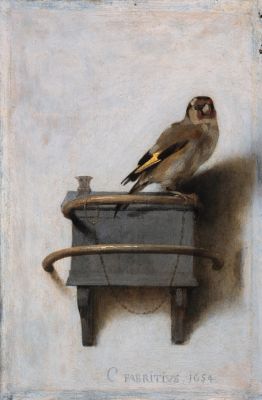A small but beautiful exhibition recently opened at the Mauritshuis, in the Hague, marking the three hundred and fiftieth anniversary of the sudden, premature death of the Dutch painter Carel Fabritius. Entitled “Carel Fabritius, Young Master Painter”, the show draws together a number of works by this intriguing and mysterious figure, whose career spanned a mere twelve years. Regarded in his own short lifetime as one of Rembrandt’s most gifted and original pupils, Fabritius gradually slipped into obscurity after his death and was only rediscovered, in the second half of the nineteenth century, by William Thore-Burger, the same critic and connoisseur who rescued the reputation of Fabritius’s contemporary, Johannes Vermeer, from oblivion. “As fate would have it, the paintings of Fabritius are still more difficult to find than those of Vermeer,” he noted at the time. “I do not think the name of Carel Fabritius is mentioned in the catalogue of any museum or collection in Europe.” Thore-Burger’s interest in the artist was first piqued by a small panel painting of a captive bird, which he described as “a mere trifle, but first-rate”, and went to great lengths to acquire for his own collection. Subsequently acquired by the Mauritshuis, where it can still be seen today, The Goldfinch is this week’s picture.
Carel Fabritius was born in 1622. “Fabritius” is Latin for “carpenter” and the fact that he adopted it as his surname suggests that his first trade was carpentry. He was probably taught painting, on the side, by his father, Pieter Carelsz, a clergyman and schoolmaster in Middenbeemster in the Southern Netherlands. This supposition is based on the knowledge that Fabritius’s father was himself a part-time artist. A note survives, in his hand, petitioning the government of the Beemster, who paid his schoolmaster’s salary, for “permission to devote his...


